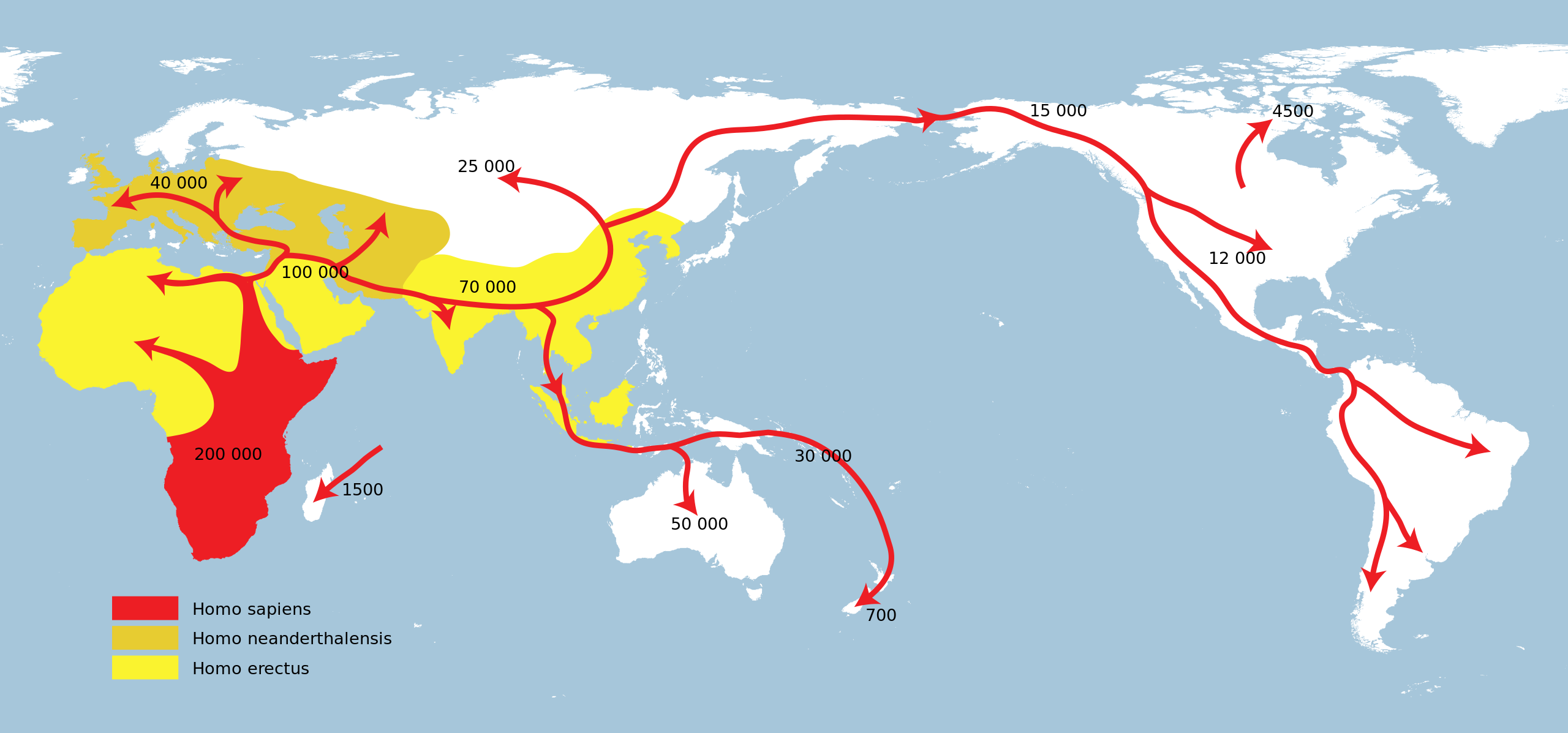
Combining climate models, genetic data with archaeological data to understand how regional environmental conditions influenced the migration of ancient people, researchers from Australia’s Flinders University reported May 29, science news site EurekAlert reported, citing the service. university press.
Researchers have gained new insights into the Great Migration by showing how environmental conditions in northern Eurasia and the Americas influenced the travel routes of ancestors who left Africa tens of thousands of years ago.
The “Out of Africa” theory suggests that more than 70,000 years ago, some groups of ancient people left Africa and spread across Europe, Asia, Australia and the Americas. However, science was unclear to what extent the environment they encountered outside Africa facilitated or hindered their journey.
The results of an interdisciplinary analysis by Flinders University ecologist Dr Frederic Saltre, who addressed this challenge, were presented in the recently published paper ‘Environmental conditions associated with the initial northward expansion of anatomically modern humans’. in the journal Nature Communications.
This study shows that while the relative importance of environmental factors varies by region, our ancestors traveled primarily in warm, humid areas with forests and grasslands near rivers.
“Early human migrants preferred routes that provided essential resources and ease of travel, as well as regions with a mix of forests and open spaces for shelter and food, allowing them to explore new territories.””said Dr. Saltre.
In Europe, humans probably first arrived from the Fertile Crescent in the Middle East, which experiences increased rainfall during the winter months, through the Caucasus Mountains to Scandinavia about 48,300 years ago and into Western Europe. about 44,100 years ago, in search of warmer and wetter conditions.
In northern Asia, migration routes followed major rivers to cope with harsher climates before reaching Beringia, the now-submerged land bridge between Siberia and Alaska, about 34,700 years ago.
In North America, people initially migrated along the Pacific coast about 16,000 years ago and then moved inland through an ice-free corridor along the Mackenzie River about 3,000 years later. In South America, the migration followed the wetter grasslands bordering the Amazon, using connections provided 14,800 years ago by major rivers.
Professor Tom Higham of the University of Vienna, evaluating the research, noted that the power of these new approaches to modeling the migration of ancient peoples in understanding humanity’s deep past is very interesting for archaeological science:
“For too long we have worked separately, using different approaches. “Combining new modeling techniques with the latest climatic, archaeological and environmental data provides truly fascinating insights into how ancient people moved and adapted across vast continents tens of thousands of years ago.”.
Professor Corey Bradshaw of Flinders University also believes that such models provide a powerful basis for studying and understanding the complexities of deep history, offering insight into how past events and conditions have shaped the present:
“Knowing where humans first moved beyond the cradle of human evolution gives us insight into how adaptable our early ancestors were, what environmental challenges they faced, and how they overcame and survived them. “We can also infer the technological innovations used at the time (such as boats, clothing, and other tools) that allowed people to take advantage of the most unfavorable environmental conditions.”.
Associate Professor Bastien Llamas of the University of Adelaide noted that combining genetic data with historical climate information and archaeological discoveries is a powerful method for identifying past patterns of human migration.
“Studying genetic differences between groups of people helps us understand ancient migration patterns. Typically the result is a basic map showing general movements from one area to another without detailed routes. “However, by combining genetic data with information about past climate, environment and archaeological finds, we can create much more detailed and accurate maps of how people moved over time and through different regions.”.
Dr Saltre said the study’s findings help us appreciate the importance of biodiversity in how our ancestors adapted and overcame environmental challenges.
“It shows how climate and ecology shaped human prehistory, highlighting the role of biodiversity in human survival and mobility, demonstrating that rich ecosystems allowed people to thrive in new environments for millennia. The biodiversity crisis we are now experiencing threatens our ability to thrive. “Despite the advanced technology we have today, I honestly wonder how long we can survive without preserving much of our current biodiversity.”.
Source: Rossa Primavera
I am Michael Melvin, an experienced news writer with a passion for uncovering stories and bringing them to the public. I have been working in the news industry for over five years now, and my work has been published on multiple websites. As an author at 24 News Reporters, I cover world section of current events stories that are both informative and captivating to read.
